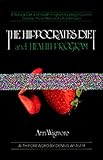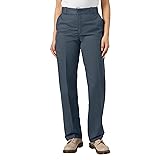All Categories




Recipes for Longer Life: Ann Wigmore's Famous Recipes for Rejuvenation and Freedom from Degenerative Diseases
Share Tweet
Get it between 2025-10-30 to 2025-11-06. Additional 3 business days for provincial shipping.
*Price and Stocks may change without prior notice
*Packaging of actual item may differ from photo shown
- Electrical items MAY be 110 volts.
- 7 Day Return Policy
- All products are genuine and original
- Cash On Delivery/Cash Upon Pickup Available








About Recipes For Longer Life: Ann Wigmore's Famous
Product Description Ann Wigmore's Recipe for Longer Life describes her transition from a conventional diet to one of natural raw foods, sprouts, and food combining. Includes sprouting techniques, fermenting of vegetables, and menus for all day. About the Author Ann Wigmore dedicated her life to teaching others the health benefits of natural foods. She spent years experimenting to find simple, healthful, and inexpensive ways to grow and prepare nutrient-rich foods. Wigmore wrote more than 15 books, including The Wheatgrass Book and Be Your Own Doctor. Excerpt. © Reprinted by permission. All rights reserved. The medical and health procedures in this book are based on the training, personal experiences, and research of the author. Because each person and situation is unique, the author and publisher urge the reader to check with a qualified health professional before using any procedure where there is any question as to its appropriateness. The publisher does not advocate the use of any particular diet and exercise program, but believes the information presented in this book should be available to the public. Because there is always some risk involved, the author and publisher are not responsible for any adverse effects or consequences resulting from the use of any of the suggestions, preparations, or procedures in this book. Please do not use the book if you are unwilling to assume the risk. Feel free to consult a physician or other qualified health professional. It is a sign of wisdom, not cowardice, to seek a second or third opinion. A DIFFERENT APPROACH TO THE VITAMIN QUESTION There has been more research work done on vitamins than any other component of food, and yet the basic facts of vitamins are almost lost upon both researchers and laymen. It is necessary to recognize “living forces” as separate and apart from materialistic concepts. It is impossible to analyze or separate out vitamins. The vitamins are something immaterial — a “living force.” Foods rich in vitamins, such as wheat grass or carrots, take on the “living forces” so that the “living forces” are integral with the wheat grass and carrots but cannot be separated from them. The “living forces” may be lost but cannot be separated out. What is the main source of this “living force”? The main source is the sun. We think of the sun’s rays as light rays, but in reality many different types of rays come into the world from the sun, and these are not all visible to us. The infrared rays and ultraviolet rays are examples. Foods rich in vitamin A, such as oils and seeds, are those which are rich in “warmth.” Warmth derives from the sun — mostly from the infrared rays of the sun. Foods rich in vitamin B are those rich in “order” such as the husks of wheat berries or rice and the peels of fruit. Order derives from the ultraviolet rays of the sun. Foods rich in vitamin C are those rich in “light” such as green leaves (wheat grass). Light derives from the visible rays of the sun. Vitamin D is in another category. The best way to describe vitamin D is to relate an experiment with pigeons which had the oil glands under their tails removed. They developed rickets, the prime vitamin D deficiency disease. When preening their feathers, the pigeons could no longer oil their feathers to allow the sun to irradiate the oil into vitamin D, with resultant absorption of the irradiated oil into the birds’ skins. Undoubtedly our best vitamin D is the vitamin D we ourselves can properly absorb through our skin from the rays of the sun. My personal belief and practice is to expose a reasonable amount of my skin to the sun whenever conveniently possible. Paradoxically, the warmth, light, and air which impart the “living forces” to growing foods will destroy them after they have been harvested. Take hay, for example, which is livestock’s chief sources of complete vitamins. A farmer will store his hay, protecting it as much as possible from light, heat, and moving air current. Years ago t




























